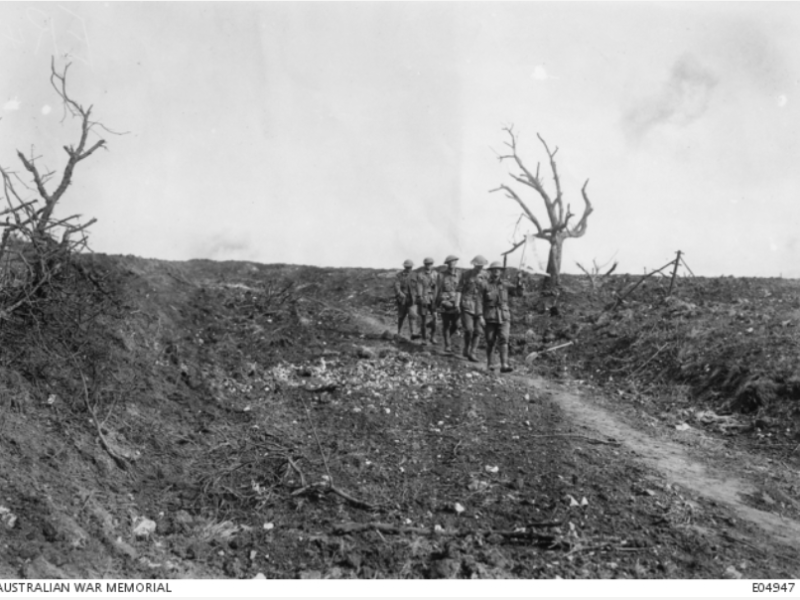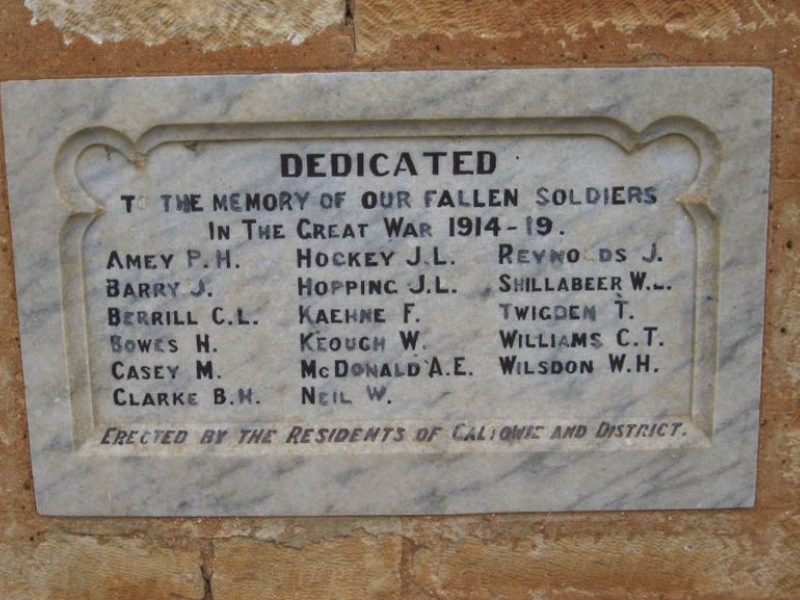Second Lieutenant Walter Harry Wilsdon DCM, 10th Battalion, AIF
Walter Wilsdon was born on 18 February 1893 in Caltowie, South Australia, to Charles and Amy Wilsdon, the eldest of seven children. He attended Caltowie Public School, and afterwards worked as a farm labourer. Wilsdon was a popular member of the Caltowie Cricket and Australian Rules clubs, taught at the Methodist Sunday School and was an active member of the Methodist Guild.
Wilsdon enlisted in the Australian Imperial Force at Oaklands on 31 December 1914. After training at the Australian Army Medical Corps depot in Adelaide, he was posted as a stretcher-bearer to B Section of the 4th Light Horse Field Ambulance.
He embarked from Adelaide in late June 1915 aboard the Borda for Egypt. In March 1916, he transferred to the 3rd Field Ambulance and sailed with his unit to France.
Wilsdon saw his first major battle at Pozières. On 23 July, he and another man went forward to bring back wounded men from the front-line trenches occupied by the 11th Battalion. They could not move through the congested communication trenches, so instead climbed into open country to get to the front line. Advancing under heavy shell-fire, they made many trips to rescue the wounded under heavy artillery fire.
Both were later awarded the Distinguished Conduct Medal.
After enduring the terrible winter of 1916, Wilsdon was sent to England to attend officer training school. He had been promoted to lance corporal in early August, and having successfully completed the officer training course, was commissioned as a second lieutenant. On returning to France in mid-August, he was posted to the 10th Battalion and joined C Company as a platoon commander.
Wilsdon took part in the battles of Menin Road and Polygon Wood. His battalion then played a supporting role during the capture of Broodseinde Ridge on 4 October; only days later the battalion was back in the front line.
On 9 October, the 10th Battalion was ordered to raid Celtic Wood. C Company was tasked with the raid, although numbers had to be supplemented by volunteers from other companies.
Wilsdon and his platoon were on the left of the line, and as the raiders began their advance on Celtic Wood, the men came under immediate fire from German machine-guns.
There are varying accounts of Wilsdon’s death but it is believed that the initial German machine-gun fire devastated the two platoons on the left as the raid began. Among the dead was Second Lieutenant Walter Wilsdon. He was 24 years old.
Wilsdon’s remains were never recovered. His name is listed on the Menin Gate Memorial to the Missing.
Michael Kelly, Historian, Military History Section
Image: Australian stretcher bearers coming in under a white flag, passing the old cemetery of Pozieres, near Mouquet Farm, August 1916. The white flag, often made on the spot out of a handkerchief or any white rag, was intended to stand for a Red Cross flag. Parties carrying this flag were not usually fired on, at this time, by German snipers

 Australian War Memorial
Australian War Memorial